Intro Financial Accounting 1-4
1/50
There's no tags or description
Looks like no tags are added yet.
Name | Mastery | Learn | Test | Matching | Spaced |
|---|
No study sessions yet.
51 Terms
Accounting consists of what three basic activities?
identifies,
• records, and
• communicates
the economic events of an organization to interested users.
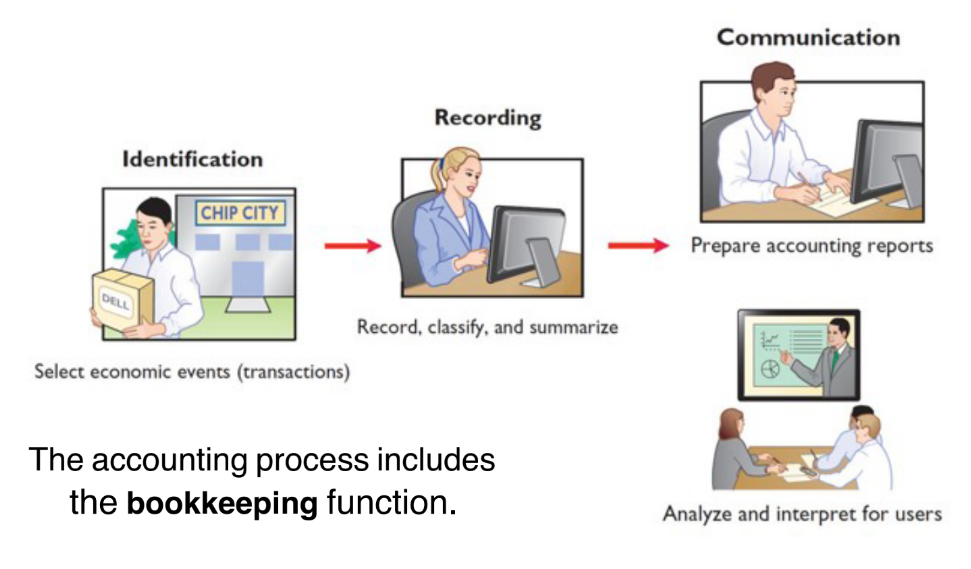
internal users
finance, marketing, HR, management
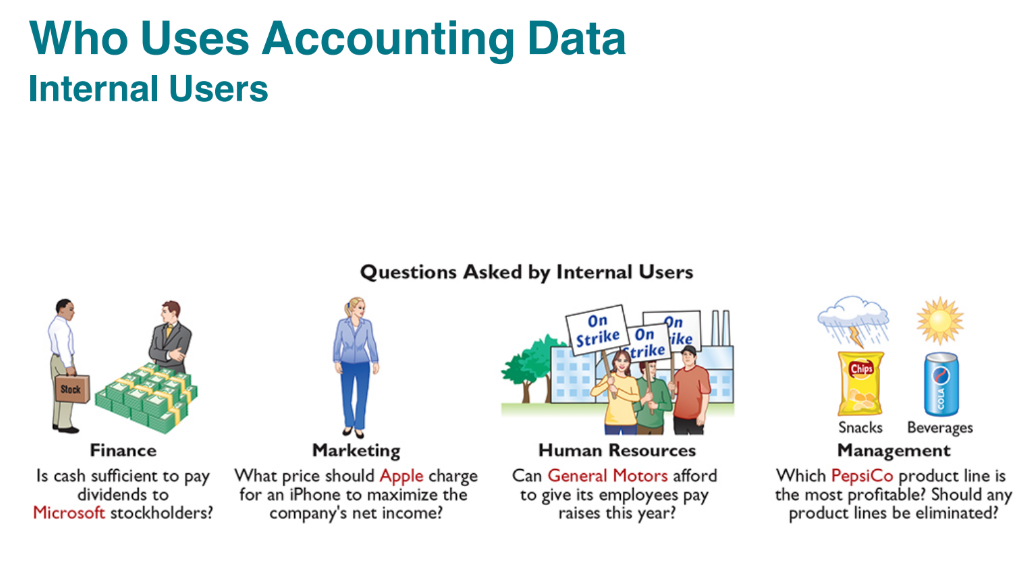
external users
investors, creditors
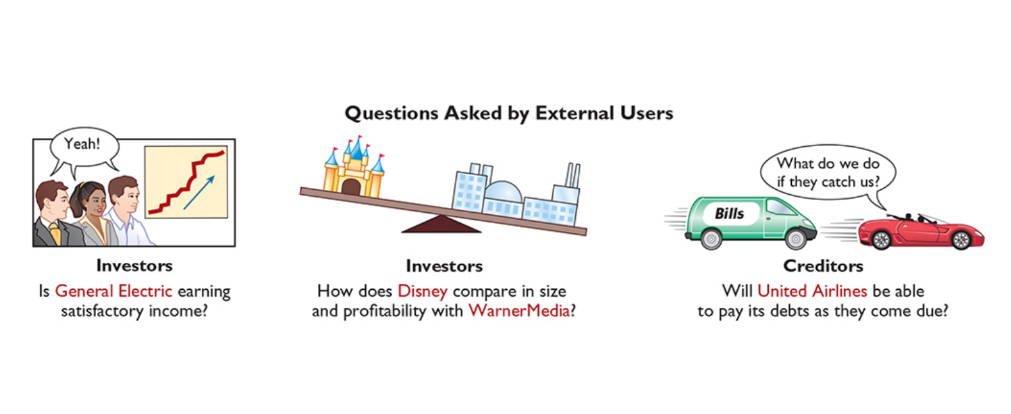
Sarbanes Oxley act
Recent financial scandals include Enron, WorldCom,
HealthSouth, AIG, and other companies.
• Regulators and lawmakers were concerned that the
economy would suffer if investors lost confidence in
corporate accounting. In response, Congress passed
Sarbanes-Oxley Act (SOX).
• Effective financial reporting depends on sound ethical
behavior – Sarbanes-Oxley was passed in an effort to
reduce unethical corporate behavior and decrease the
likelihood of future corporate scandals.
GAAP
Standards that are
generally accepted and universally practiced. These standards indicate
how to report economic events.
Standard-setting bodies:
• Financial Accounting Standards Board (FASB)
• Securities and Exchange Commission (SEC)
• International Accounting Standards Board (IASB)
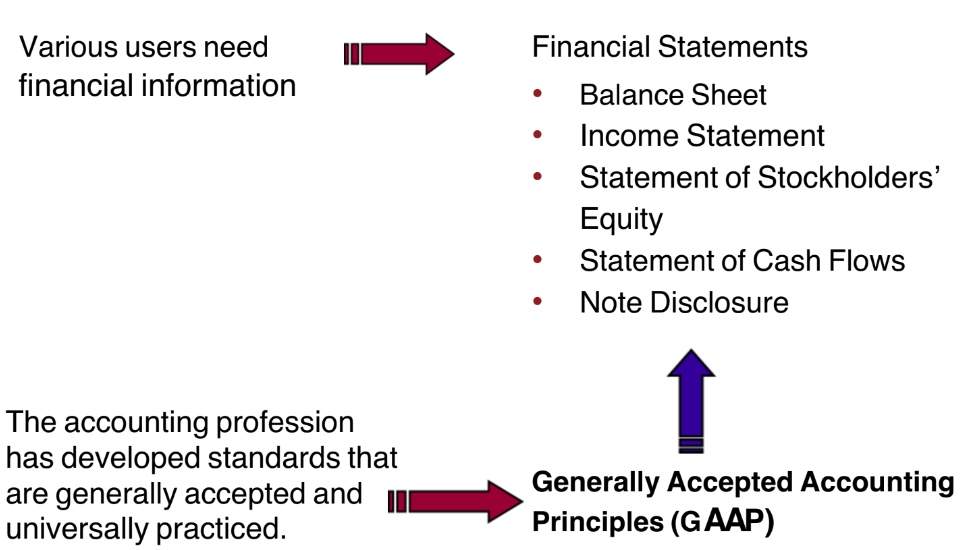
If a business is liquidated, ___
must be paid before ___
claims of creditors (liabilities), ownership claims (stockholders’
equity).
assets
• Resources a business owns.
• Provide future services or benefits.
• Cash, Supplies, Equipment, etc.
liabilities
Claims against assets (debts and obligations).
• Creditors (party to whom money is owed).
• Accounts payable, notes payable, salaries and wages
payable, sales and real estate taxes payable, etc.
stockholders’ equity
Ownership claim on total assets.
• Referred to as residual equity.
• Common stock and retained earnings.
stockholders’ equity formula
common stock + retained earnings (revenues - expenses - dividends)
Companies prepare what 4 financial statements?
Income Statement
• Retained Earnings Statement
• Balance Sheet
• Statement of Cash Flows
income statement
Reports the profitability of the company’s operations over
a specific period of time.
• Lists revenues first, followed by expenses.
• Shows net income (or net loss).
• Does not include investment and dividend transactions
between the stockholders and the business.
retained earnings statement
Reports the changes in retained earnings for a specific
period of time.
• The time period is the same as that covered by the income
statement.
• Information provided by this statement indicates the
reasons why retained earnings increased or decreased
during the period.
(net income - dividends)
balance sheet
Reports the assets, liabilities, and stockholders’ equity at a
specific date.
• Lists assets at the top, followed by liabilities and
stockholders’ equity.
• Total assets must equal total liabilities and stockholders’
equity.
• Is a snapshot of the company’s financial condition at a
specific moment in time (usually the month-end or year-
end).
recording process
-analyze transaction
-enter transaction in journal
-transfer journal info. to ledger accounts
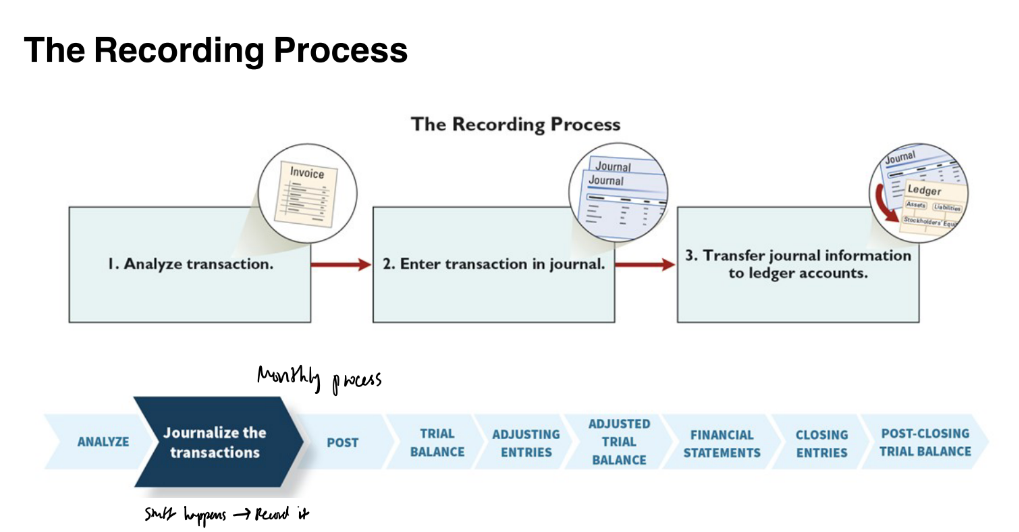
journal
Book of original entry.
• Transactions recorded in chronological order.
• Contributions to the recording process:
1. Discloses in one place the complete effects of a
transaction.
2. Provides a chronological record of transactions.
3. Helps to prevent or locate errors because the debit
and credit amounts can be easily compared.
ledger
the entire group of accounts maintained by
a company.
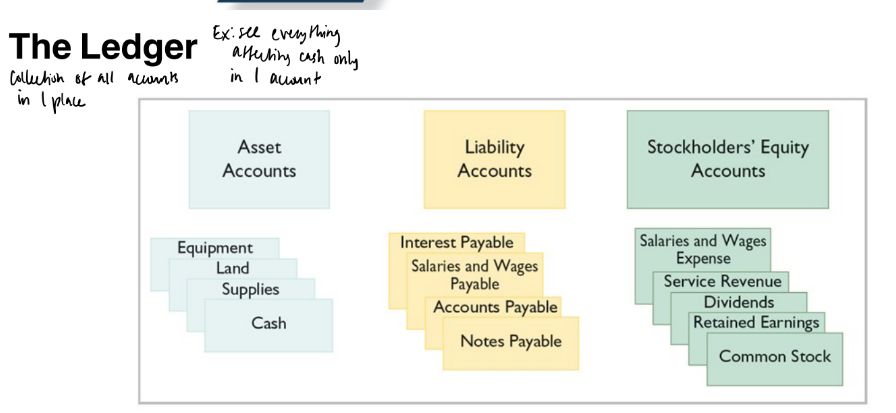
posting
process of
transferring
journal entries
to the ledger
accounts.
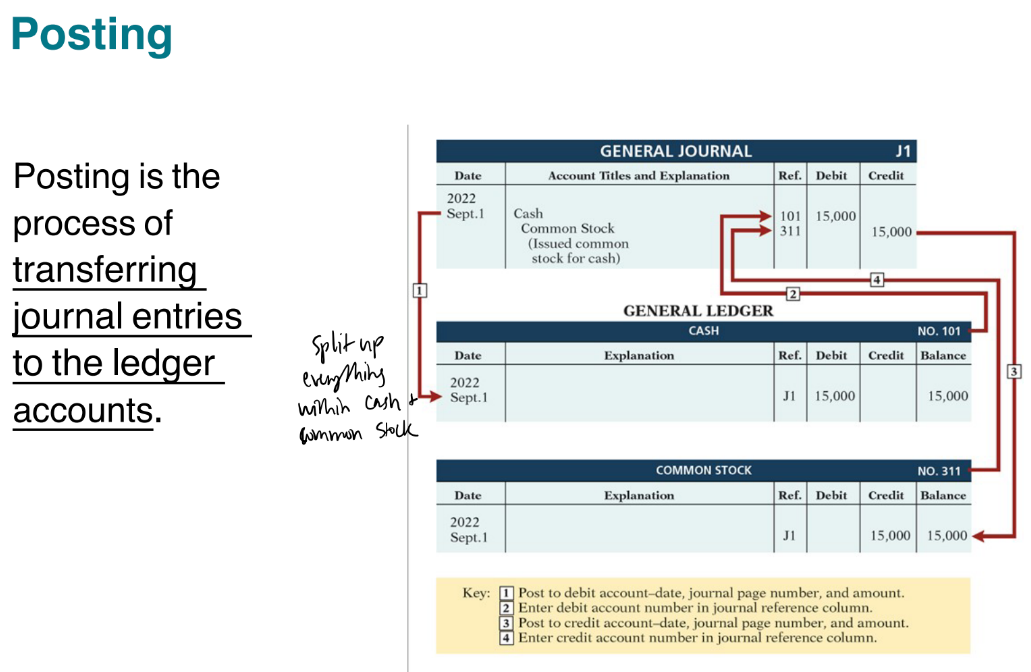
time period assumption
Accountants divide the economic life of a business into
artificial time periods
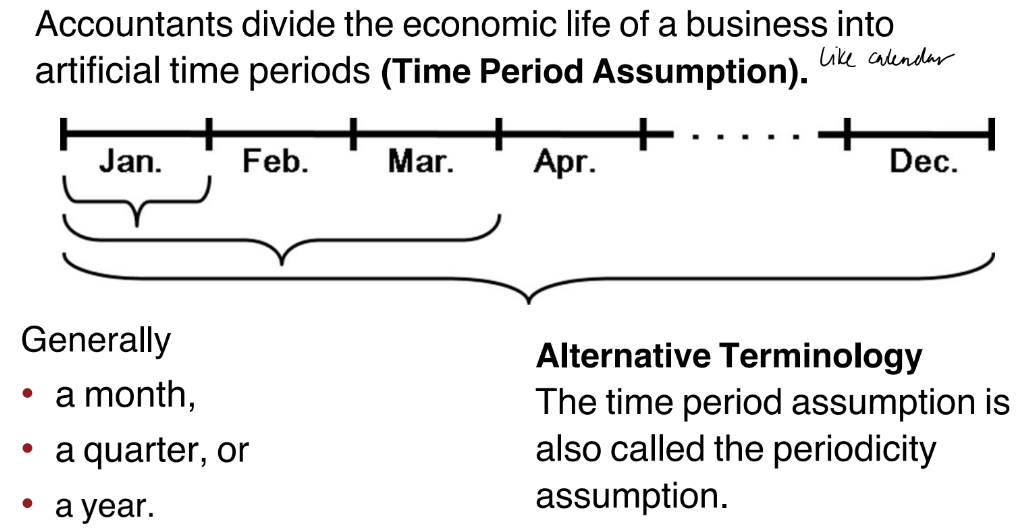
cash-basis accounting
Revenues are recorded when cash is received.
• Expenses are recorded when cash is paid.
• Cash-basis accounting is not in accordance with generally
accepted accounting principles (GAAP).
accrual-basis accounting
Transactions are recorded in the periods in which the
events occur.
• Companies recognize revenues when they perform
services (rather than when they receive cash).
• Expenses are recognized when incurred (rather than when
paid).
revenue recognition principle
Recognize revenue in the
accounting period in which the
performance obligation is satisfied
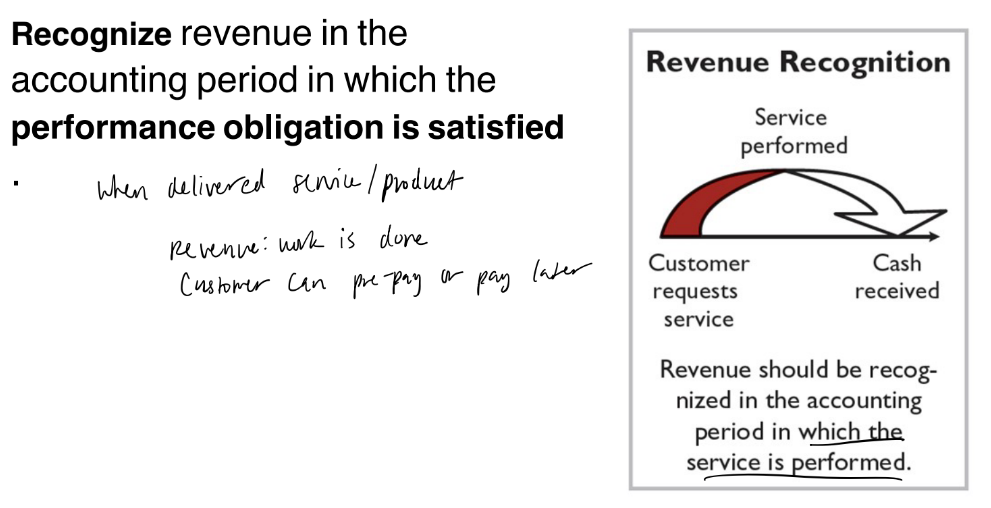
expense recognition principle
Match expenses with revenues in
the period when the company
makes efforts to generate those
revenues.
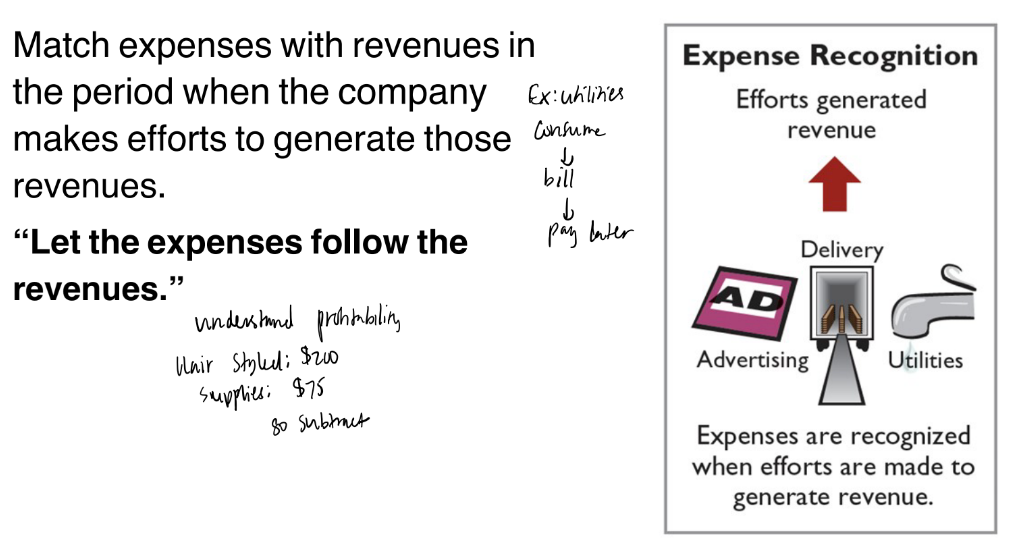
adjusting entries
Ensure that the revenue recognition and expense
recognition principles are followed.
• Necessary because the trial balance may not contain up-to-
date and complete data.
• Required every time a company prepares financial
statements.
• Will include one income statement account and one
balance sheet account.
prepaid expenses
Expenses paid in cash
before they are used or
consumed.
Payments of expenses that will benefit more than one
accounting period.
• Insurance
• Supplies
• Advertising
• Rent
• Buildings and equipment
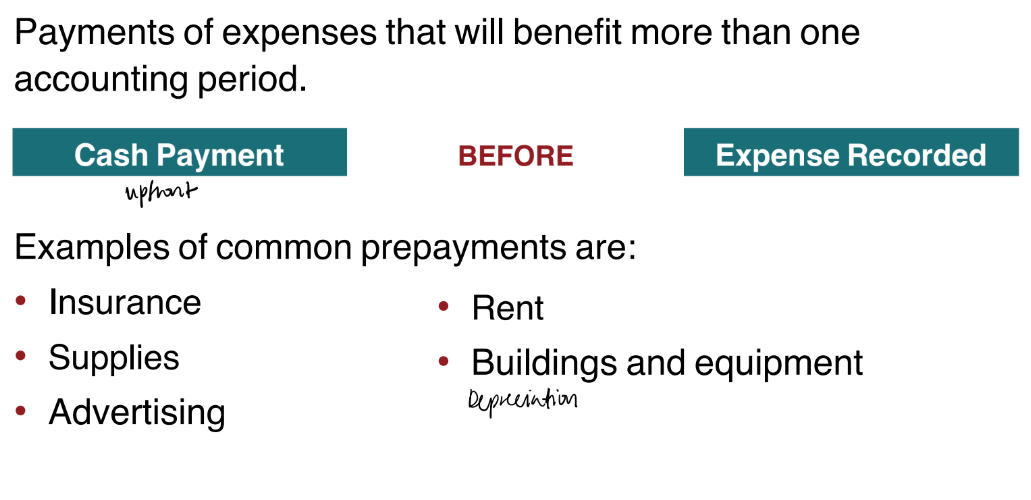
unearned revenue
Cash received before
services are performed.
Receipt of cash that is recorded as a liability because the
service has not been performed.
• Rent
• Airline tickets
• Magazine subscriptions
• Customer deposits
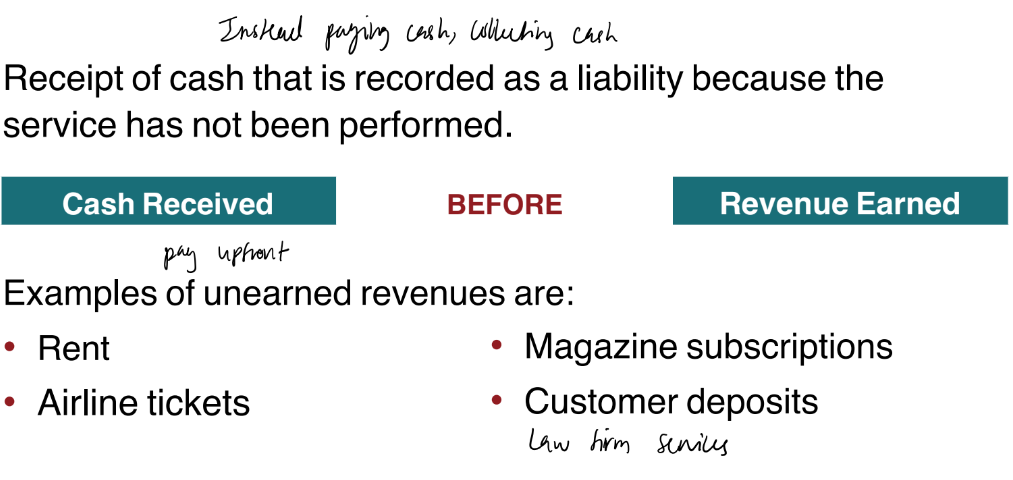
accrued revenue
Revenues for services
performed but not yet
received in cash or
recorded.
Revenues for services performed but not yet received in
cash or recorded.
• Rent
• Interest
• Services performed
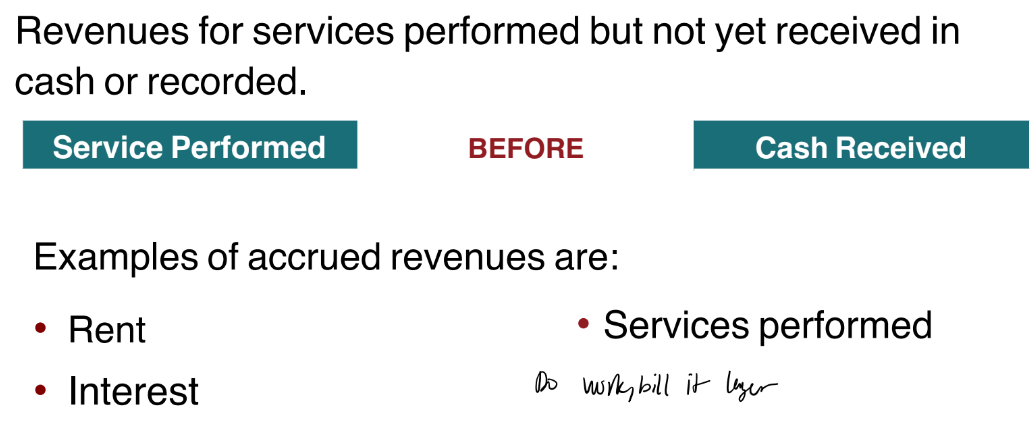
accrued expense
Expenses incurred but
not yet paid in cash or
recorded.
Expenses incurred but not yet paid in cash or recorded.
• Interest
• Taxes
• Salaries
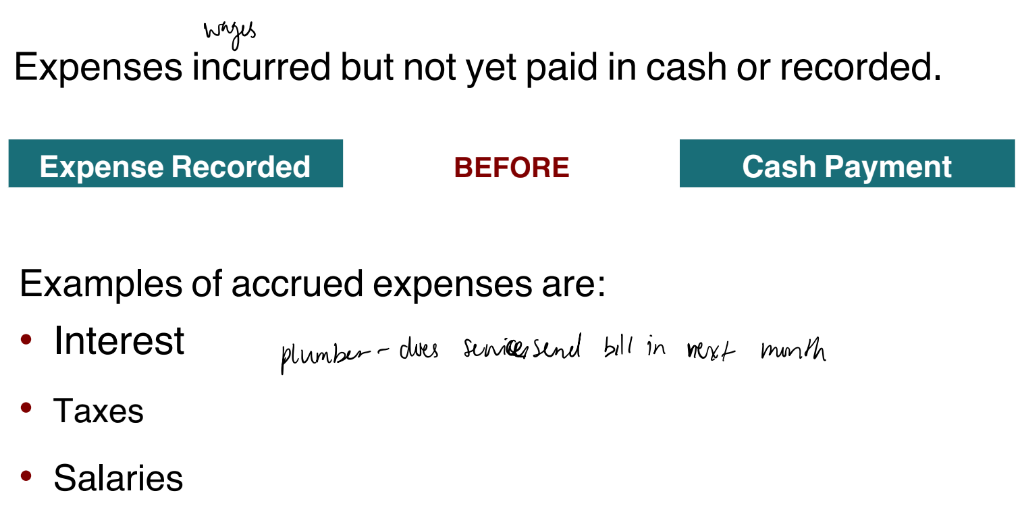
relevance
Make a difference in a business decision.
• Provides information that has predictive value and confirmatory
value.
materiality
is a company-specific aspect of relevance.
o An item is material when its size makes it likely to influence the
decision of an investor or creditor.
faithful representation
Information accurately depicts what really happened.
• Information must be
o complete (nothing important has been omitted),
o neutral (is not biased toward one position or another), and
o free from error.
comparability
Comparability results when different companies use the same
accounting principles.
going concern
The business will remain in
operation for the foreseeable
future.
temporary accounts
-all revenue accounts
-all expense accounts
-dividends
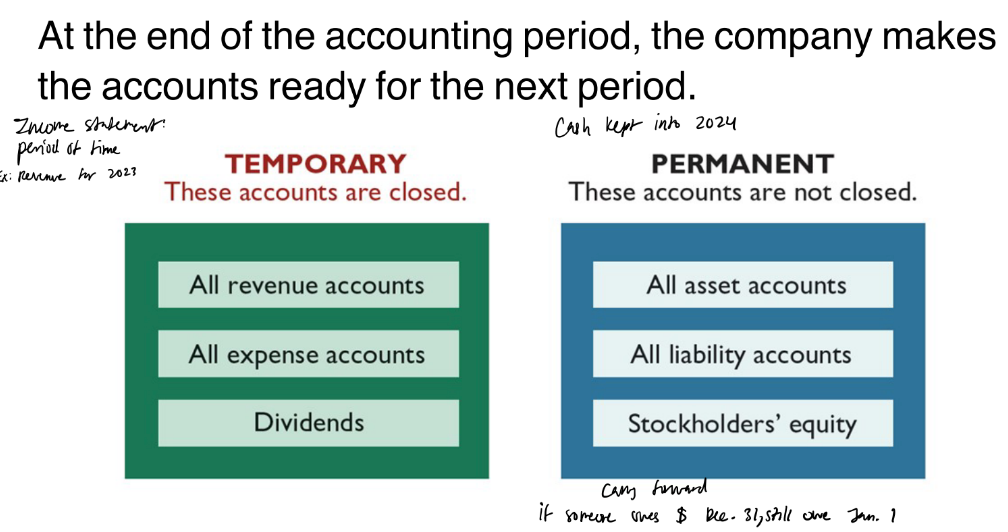
permanent accounts
-all asset accounts
-all liability accounts
-stockholder’s equity
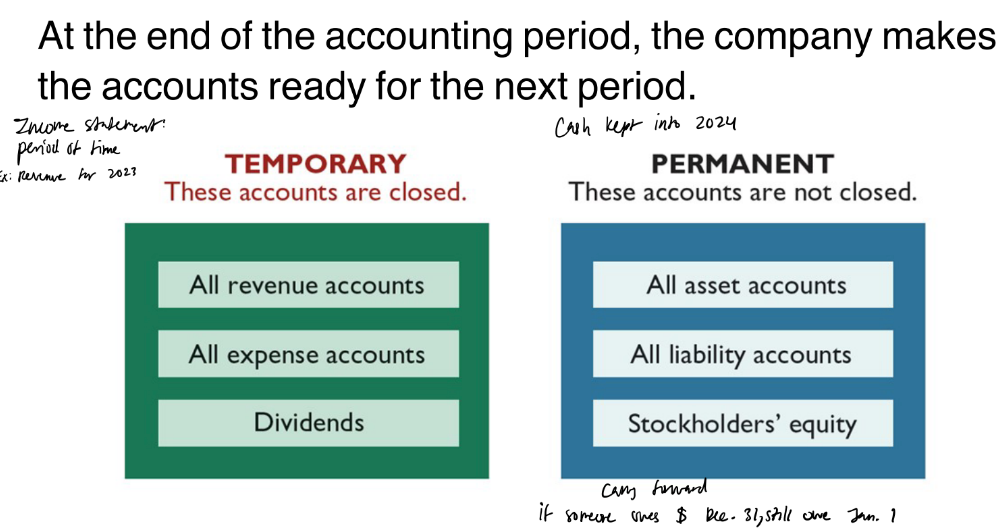
closing entries
formally recognize in the ledger the
transfer of
• net income (or net loss) and
• Dividends
to Retained Earnings.
Companies generally journalize and post closing entries
only at the end of the annual accounting period.
Closing entries
income summary account
First, a company closes revenues and expenses to an
account called Income Summary. Think of this account,
Income Summary, as a temporary holding account for
these amounts. Once all the revenues and expenses are
closed to Income Summary, the account balance equals
net income. This balance is then closed to Retained
Earnings.
-won’t show up on financial statement
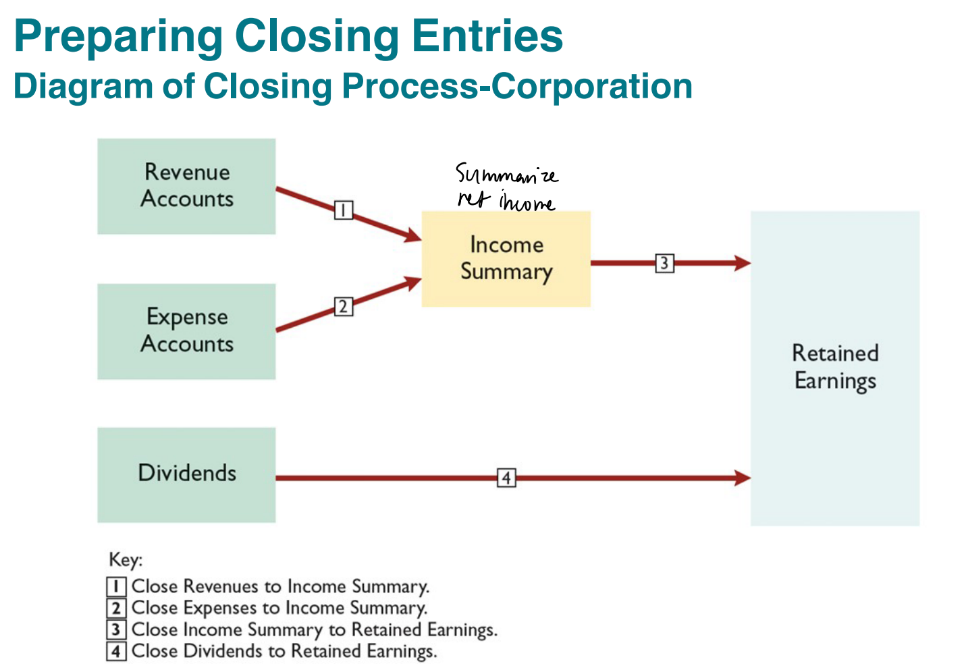
steps in accounting cycle
Analyze Business Transactions
2. Journalize the Transactions
3. Post to the Ledger Accounts
4. Prepare a Trial Balance
5. Journalize and Post Adjusting Entries: Deferrals/Accruals
6. Prepare an Adjusted Trial Balance
7. Prepare Financial Statements
8. Journalize and Post Closing Entries
9. Prepare a Post-Closing Trial Balance
correcting entry
• Unnecessary if accounting records are free of errors.
• Made whenever an error is discovered.
• Must be posted before closing entries.
Instead of preparing a correcting entry, it is possible to reverse
the incorrect entry and then prepare the correct entry.
On May 10, Mercato Co. journalized and posted a $50 cash
collection on account from a customer as a debit to Cash $50 and a
credit to Service Revenue $50. The company discovered the error
on May 20, when the customer paid the remaining balance in full. correcting entry?
-debit service revenue 50
-credit AR 50
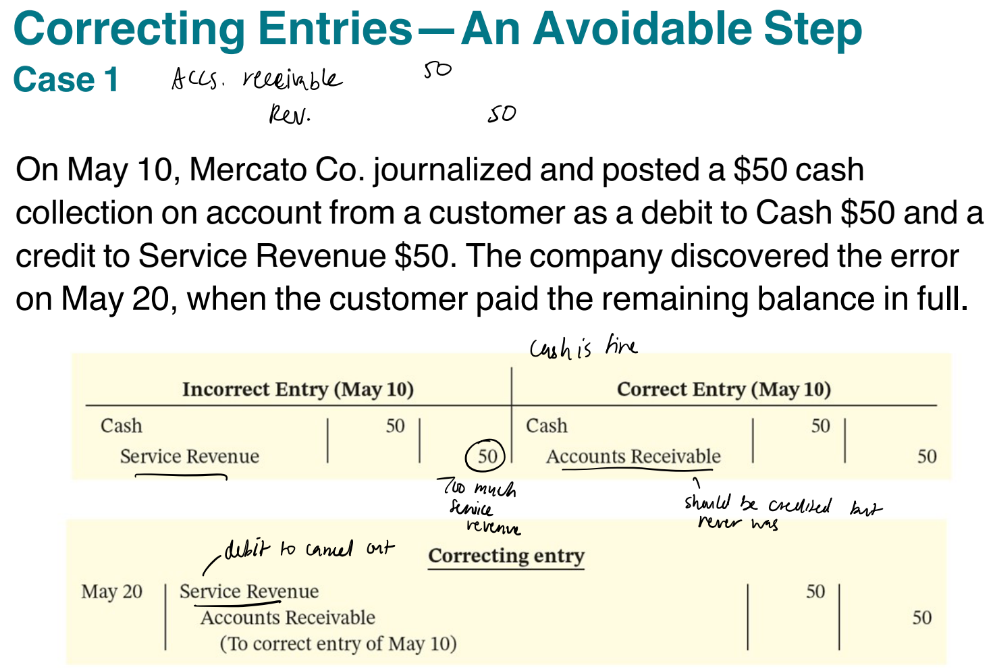
On May 18, Mercato purchased on account equipment costing
$450. The transaction was journalized and posted as a debit to
Equipment $45 and a credit to Accounts Payable $45. The error was
discovered on June 3. Correcting entry?
-D equipment 405
-C AP 405
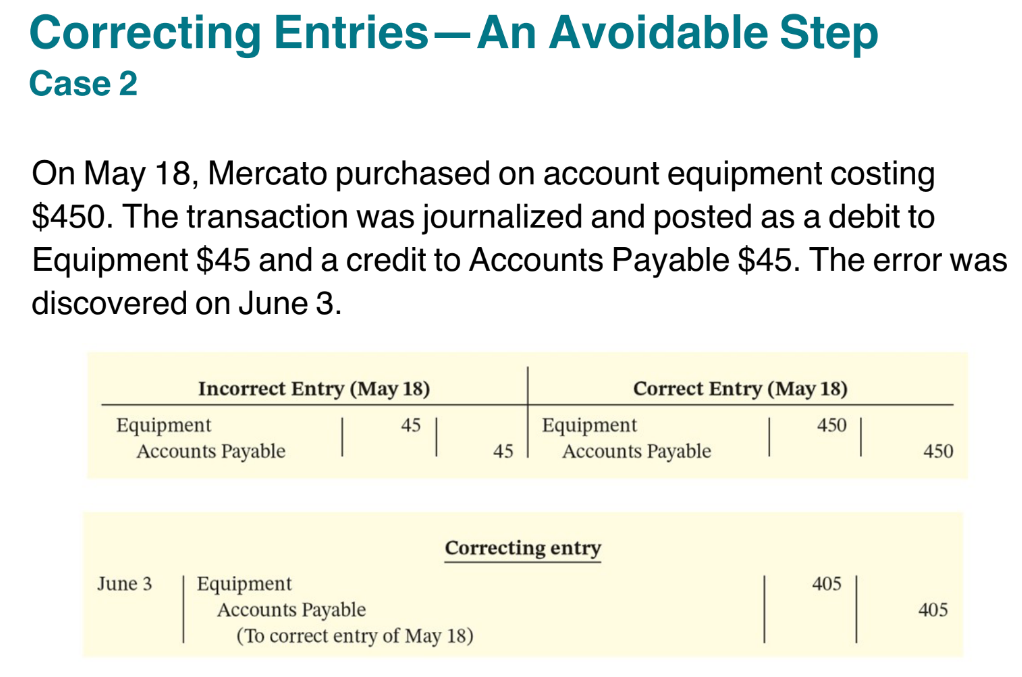
classified balance sheet: assets
current assets, long-term liabilities, property/plant/equipment, intangible assets
classified balance sheet: liabilities and stockholder’s equity
current liabilities, long-term liabilities, stockholder’s equity
classified balance sheet: current assets examples
cash, debt investment, accounts receivable, notes receivable, inventory, supplies, prepaid insurance
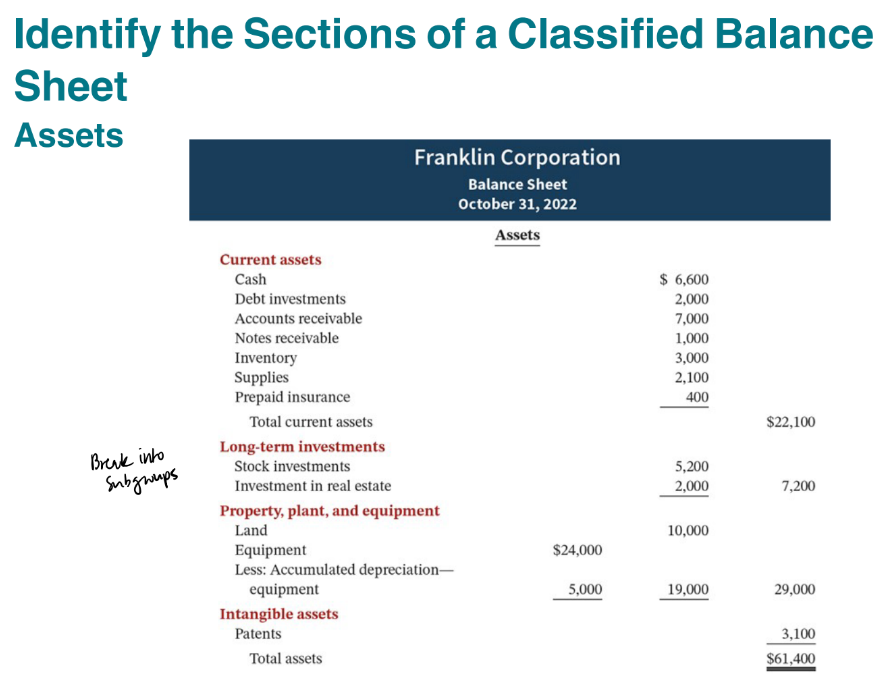
classified balance sheet: property/plant/equipment examples
land, equipment
-less accumulated depreciation
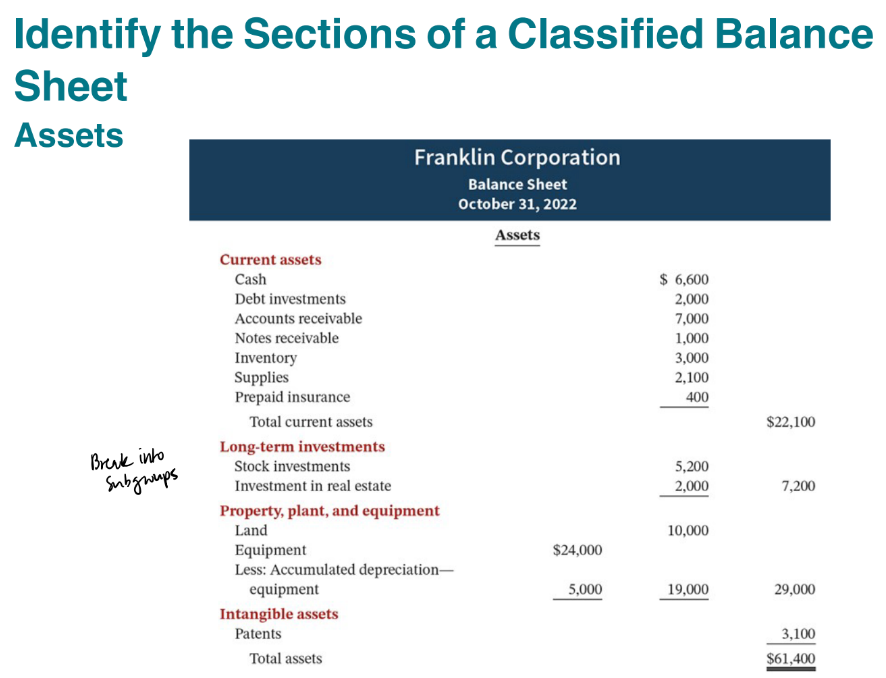
classified balance sheet: current liabilities examples
notes payable, accounts payable, unearned service revenue, salaries and wages payable, interest payable
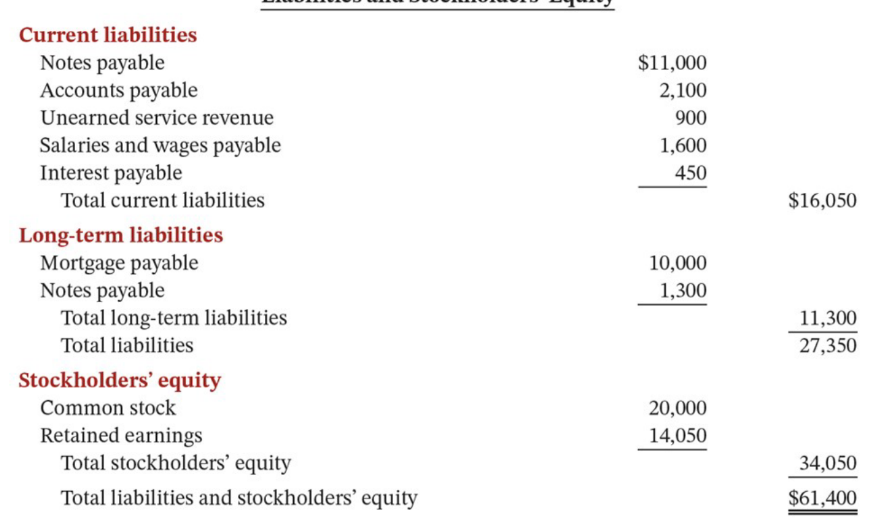
current assets
Assets that a company expects to convert to cash or
use up within one year or its operating cycle,
whichever is longer.
• Operating cycle is the average time that it takes to
purchase inventory, sell it on account, and then collect
cash from customers.
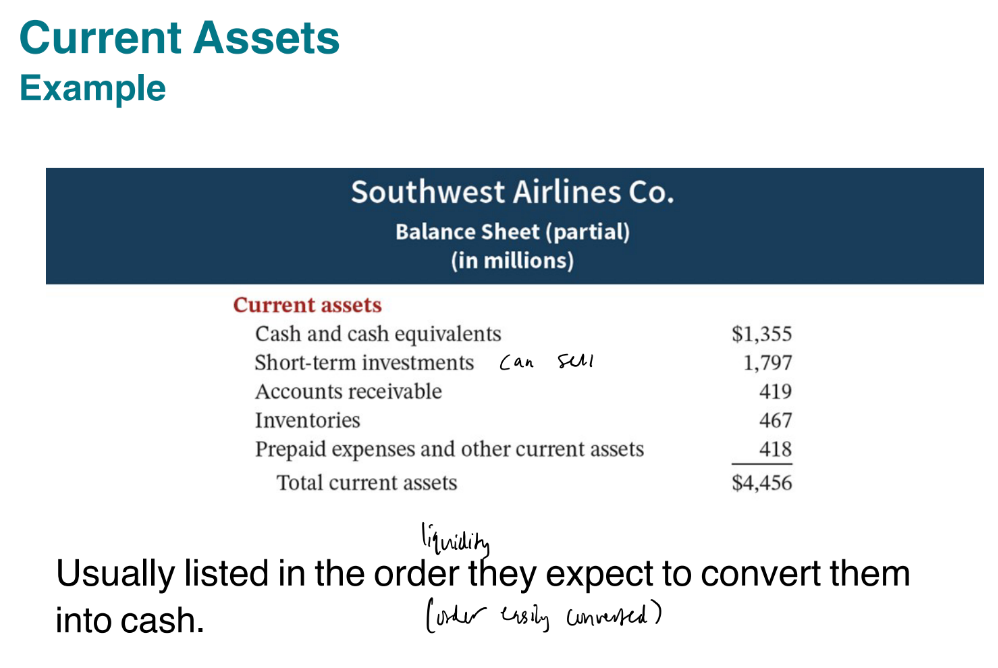
property, plant, and equipment
Long useful lives.
• Currently used in operations.
• Depreciation - allocating the cost of assets to a number of
years.
• Accumulated depreciation - total amount of depreciation
expensed thus far in the asset’s life.
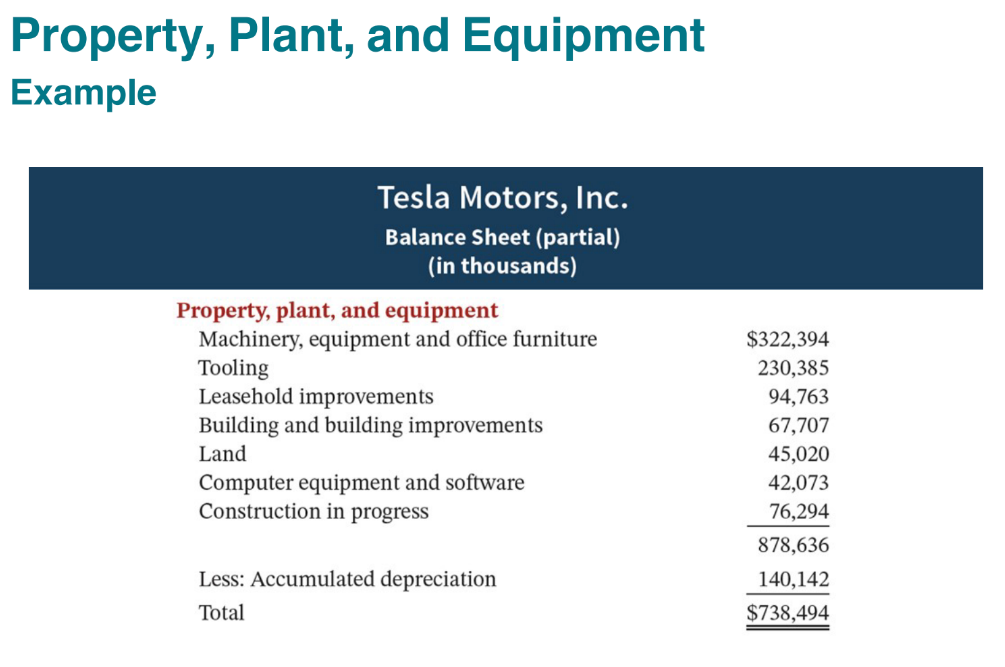
current liabilities
Obligations the company is to pay within the coming year
or its operating cycle, whichever is longer.
• Usually list notes payable first, followed by accounts
payable. Other items follow in order of magnitude.
• Common examples are accounts payable, salaries and
wages payable, notes payable, interest payable, income
taxes payable, and current maturities of long-term
obligations.
• Liquidity - ability to pay obligations expected to be due
within the next year.
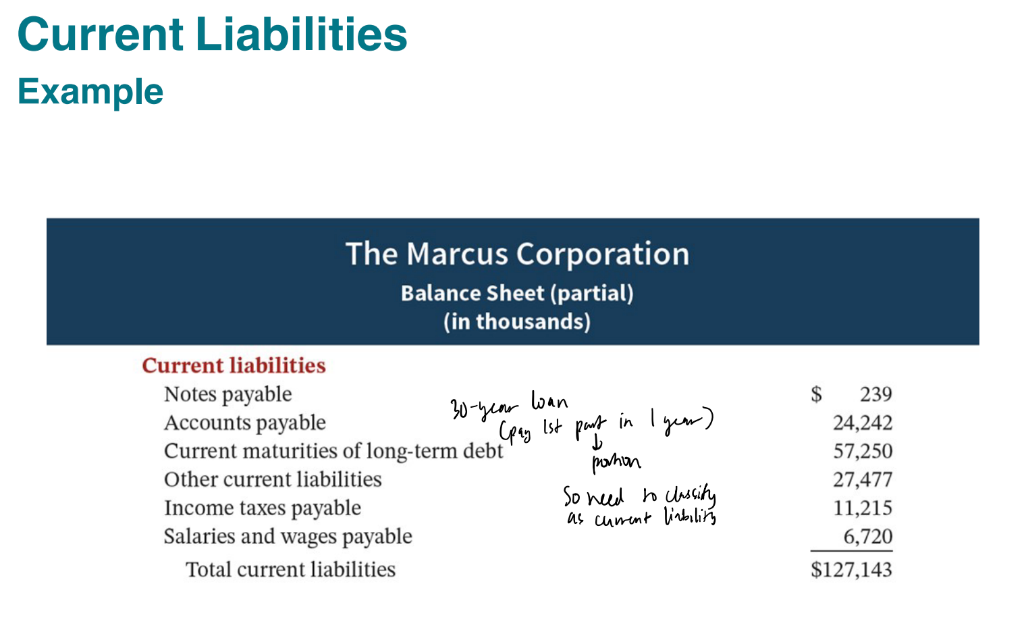
long-term liabilities
Obligations a company expects to pay after one year.
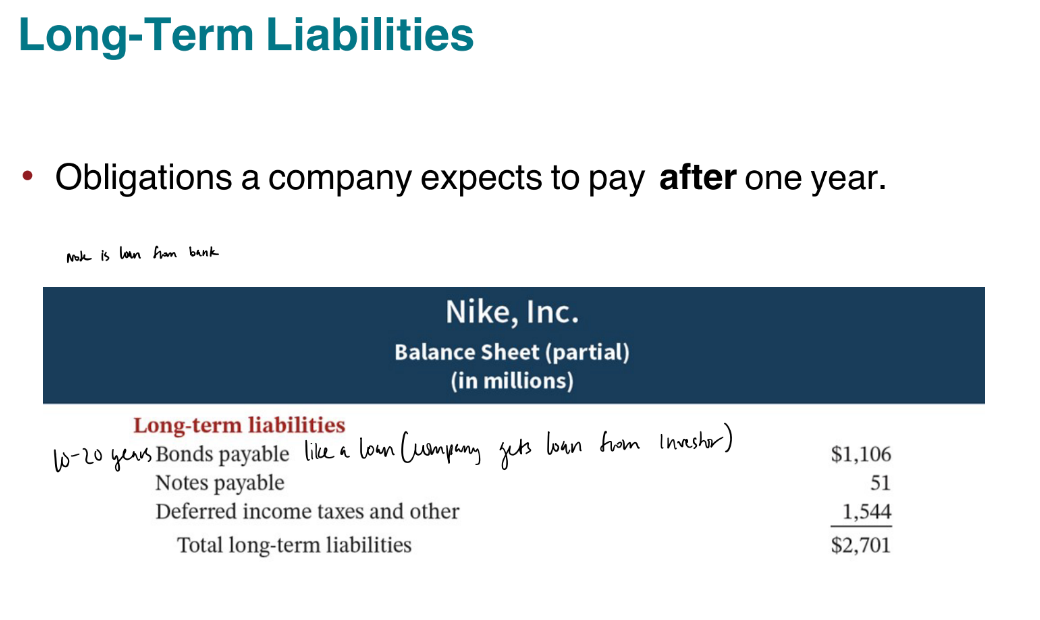
reversing entry
It is often helpful to reverse some of the adjusting entries
before recording the regular transactions of the next
period.
• Companies make a reversing entry at the beginning of the
next accounting period.
• Each reversing entry is the exact opposite of the adjusting
entry made in the previous period.
• The use of reversing entries does not change the amounts
reported in the financial statements.